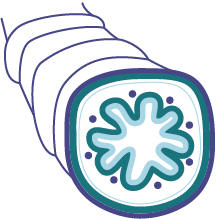
NTM Treatment
It’s important to remember that not everyone with nontuberculous mycobacterium needs to begin treatment right away. NTM infections tend to grow slowly. A decision to treat is based on an informed discussion with your healthcare provider.
Instead, your doctor may recommend monitoring before you undergo any treatment for nontuberculous mycobacterium. Monitoring includes regular follow-up exams to gauge changes in your condition.
While many NTM infections will need immediate treatment your doctor may decide in certain situations that therapy may not be needed immediately. Since NTM lung disease isn’t believed to be contagious, following your doctor’s wait-and-watch approach won’t endanger your caregivers or loved ones.
If you do require medication intervention, the severity of NTM at diagnosis and how it is treated will impact your road to recovery. If you are diagnosed with MAC or any other of the bacteria that cause NTM, you will work closely with your specialist and other healthcare team members. Treatment of NTM lung disease is not one-size-fits-all so, within the proven protocols, your course of treatment may be unique to you.
Antibiotic treatment for nontuberculous mycobacterium
Medications may be effective for many patients living with NTM lung disease. A regimen of antibiotics and other airway clearance modalities may help clear mucus in the lungs and prevent mucus from trapping bacteria so new infections may not develop.
Doctors usually prescribe a combination of three or four antibiotics including:
- Clarithromycin
- Azithromycin
- Rifampin
- Rifabutin
- Ethambutol
- Streptomycin
- Amikacin
- Clofazimine
Most antibiotics are taken orally or inhaled by nebulizer, but some require intravenous application. If your specialist determines that your MAC diagnosis warrants medication, they will prescribe several antibiotics to treat the infection and prevent the mycobacteria from becoming resistant to any one drug. These medications are usually taken daily or three times a week in pill form. But, even if you need IV antibiotics, in certain situations you can take them at home with the help of a caregiver, visiting nurse or family member.
The extent of Mycobacterium avium complex treatment is not determined by length of time, but rather by the level of mycobacteria found in your sputum. During treatment your doctor will test your sputum as needed. The goal with NTM lung disease treatment is to reduce the presence of mycobacteria and prevent another infection. While most patients continue to struggle and treatment for some forms of NTM can last a year or more, you may respond faster. Patients will need to follow up regularly with their healthcare provider because symptoms may recur.

